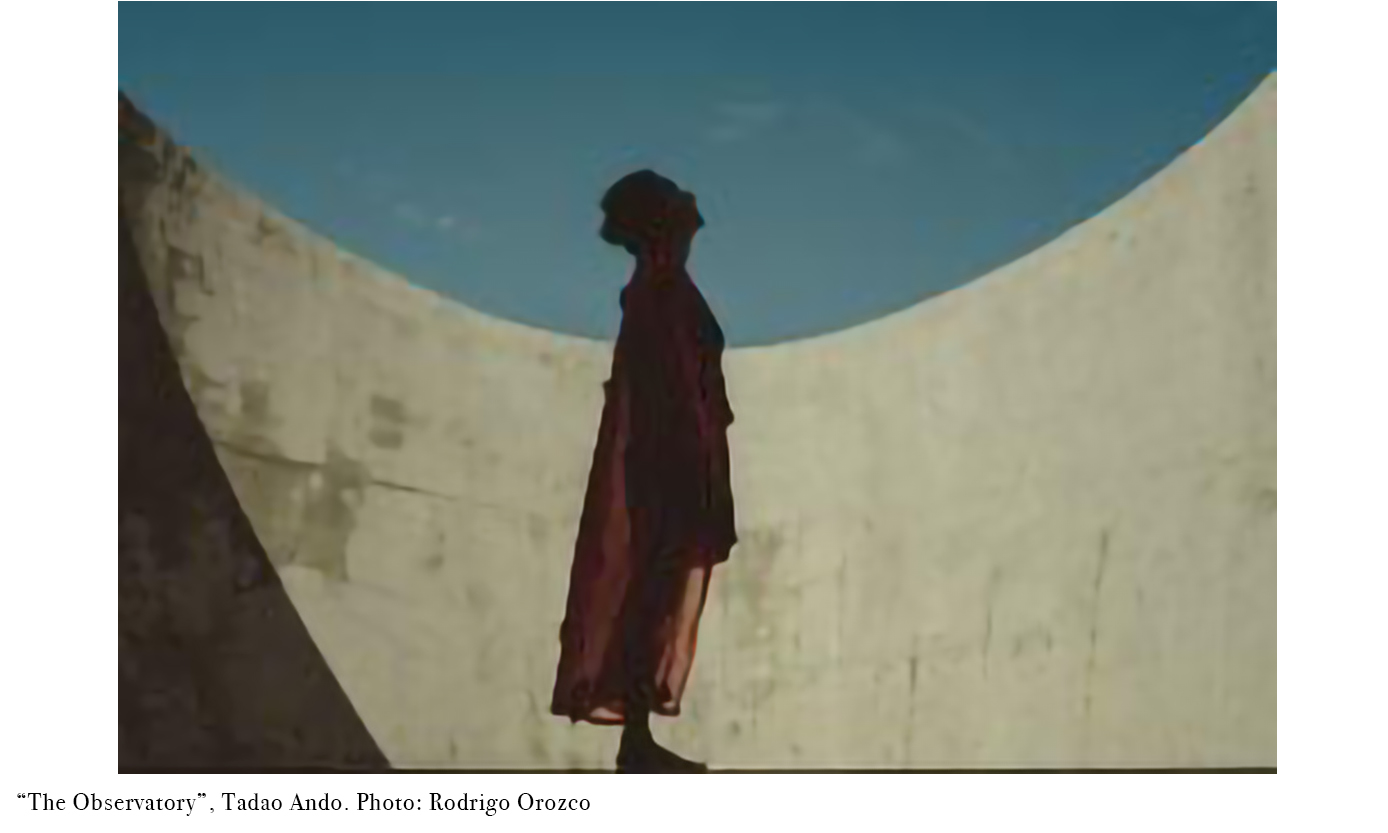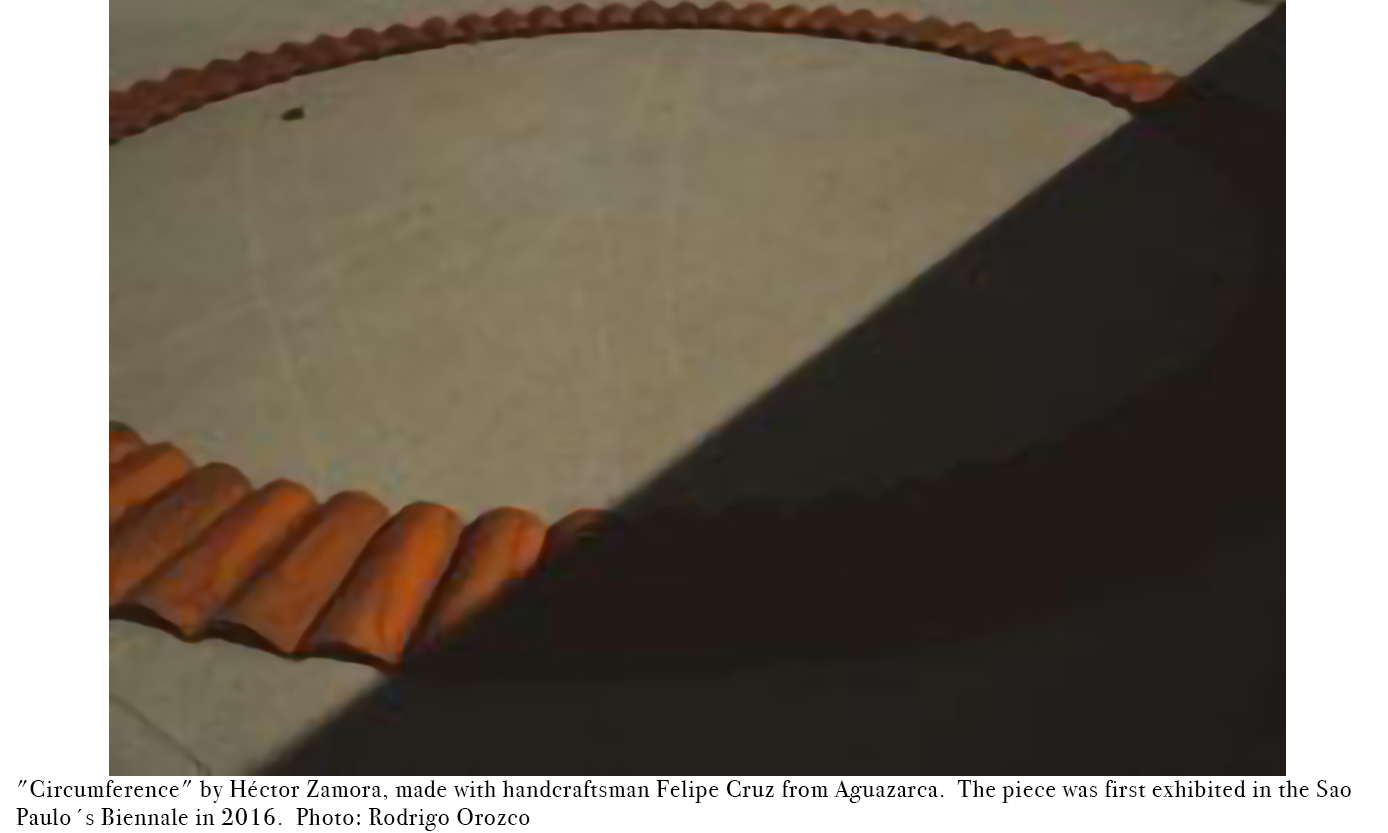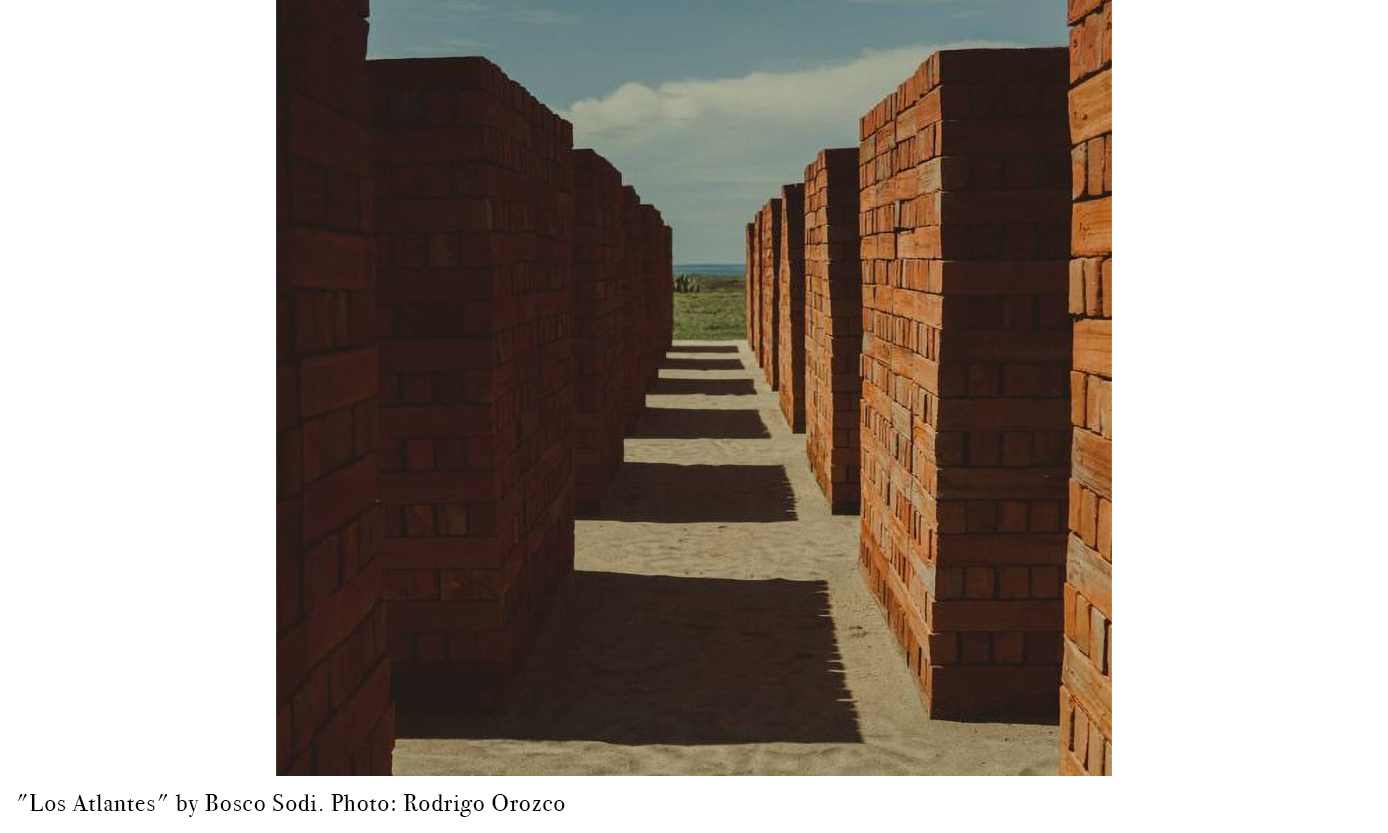Natura Viva: Casa Wabi
By Regina De Con Cossio
We made our way to an unusual place in midday heat; not at all prejudiced about “Casa Wabi”, an artist residence on the coast of Oaxaca. Bosco Sodi envisioned the importance of bringing together art, with the community and a majestic landscape.
Eager to experience the Tadao Ando´s design, the residence appeared by the ocean in wood reliability and communion. Isolated from the rest of the world, nowhere and everywhere, the intense blue sky, the animal life and the Pacific Ocean enhance our artistic admiration. Filled from first glances at our setting, our emotions begin to stir at the way the environment impacts the connection with art. This is certainly not a novelty; however, it invites us to reflect on the (artistic) consequences of a natural setting.
Our attention was lured from a piece by Héctor Zamora belonging to the Wabi´s permanent collection. Displayed on the floor, the clay circular silhouette made of 80 tiles, paradoxically encloses an apparent hole, filled with concrete and light games. The circle echoes a fence that outlines the chance of having an inside-out experience as a viewer.
Wandering around it increases its dynamic power, just as we get a slight wind of the Marxist debate on uniformity. The monochromatic texture of each tile and the structure, vanished by the sun, create myriad shapes. Does the presence of time open a space for eternity? Are we in front of one or a million?
While in the aesthetic jargon, “nature mort” depicts unanimated objects, our scenario opposes the very vitality of the surroundings. Are we in front of nature life? And will its fate depend on its outdoor resilience? The environment will reshape the artworks time and again, in a certain way that two separate levels of interaction appear. The first is an (independent-from-the-viewer) marriage of nature and art, what will develop its own narrative. Whereas the second includes subjectivity in a way the observer is invited to stablish a personal dialogue. His experience while actively contemplating becomes unique and will vary with the changes of the Artwork along time. The outcomes of the connection with the artwork, and the effects will be translated into multiple interpretations that will vary subject by subject.
In a way, the pieces will remain unfinished. There conservation will not be assured. Their shape will be redefined. Will the pieces be different every time we visit them again? What possible end discourse do they carry?







